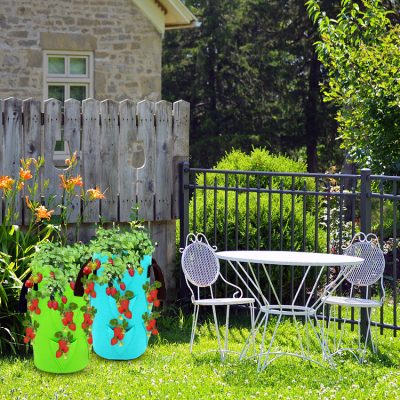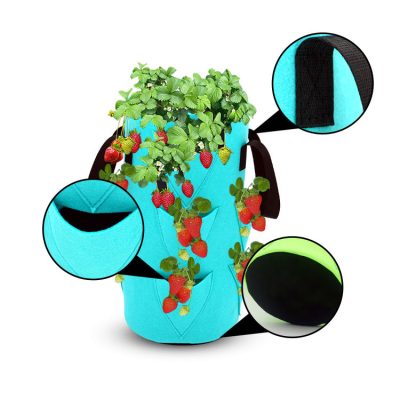Both fabric grow bags and traditional pots have their advantages and considerations. The choice between the two ultimately depends on your specific gardening needs and preferences. Let’s compare the two options:
Advantages of Fabric Grow Bags:
- Improved Drainage and Aeration: Fabric grow bags provide excellent drainage and aeration due to their breathable material. This helps prevent waterlogging, root rot, and soil compaction, promoting healthier root development and plant growth.
- Prevents Root Circling: Fabric grow bags prevent root circling by allowing air pruning. When the roots reach the edge of the bag and are exposed to air, they stop growing in circles and instead develop a more fibrous root system. This leads to better nutrient absorption and overall plant health.
- Temperature Regulation: The breathable fabric of grow bags allows excess heat to escape during hot weather, preventing overheating of the roots. It also provides insulation during colder seasons, protecting the roots from extreme temperatures.
- Portable and Space-Efficient: Fabric grow bags are lightweight and easy to move around, making them suitable for gardens with limited space. They are also a convenient option for those who want to optimize sunlight exposure by moving plants as needed.
- Versatility: Fabric grow bags can be used for a wide range of plants, including vegetables, herbs, flowers, and shrubs. They are suitable for both indoor and outdoor gardening, allowing for flexibility in plant placement.
Advantages of Traditional Pots:
- Sturdier Structure: Traditional pots, typically made of materials like ceramic, plastic, or clay, offer a more rigid and stable structure. This can be advantageous for larger plants or in windy areas where stability is important.
- Moisture Retention: Traditional pots tend to retain moisture better than fabric grow bags. This can be beneficial in dry climates or for plants that require more consistent moisture levels.
- Design and Aesthetics: Traditional pots often come in a variety of shapes, sizes, and designs, allowing for more customization and aesthetic appeal in your garden or indoor space.
- Easier to Overwinter: If you live in a cold climate and need to overwinter your plants indoors, traditional pots can be more suitable as they provide better insulation for the roots compared to fabric grow bags.
Considerations for Both Options:
- Watering Frequency: Fabric grow bags tend to dry out faster than traditional pots, requiring more frequent watering. This can be advantageous for plants that prefer well-draining soil but may require more attention from the gardener.
- Material Durability: While fabric grow bags are designed to be durable, they may not last as long as traditional pots made from materials like ceramic or high-quality plastic. However, they can still provide several seasons of use with proper care.
- Cost: Fabric grow bags are generally more affordable than traditional pots, especially for larger sizes. They offer good value for money considering their benefits and versatility.
In summary, fabric grow bags are a sustainable and practical option that promotes better drainage, aeration, and root development. They are suitable for various plants, portable, and space-efficient. Traditional pots offer sturdier structures, moisture retention, and aesthetic options. Consider the specific needs of your plants, your gardening space, and your preferences to determine which option is better suited for your gardening endeavors.








